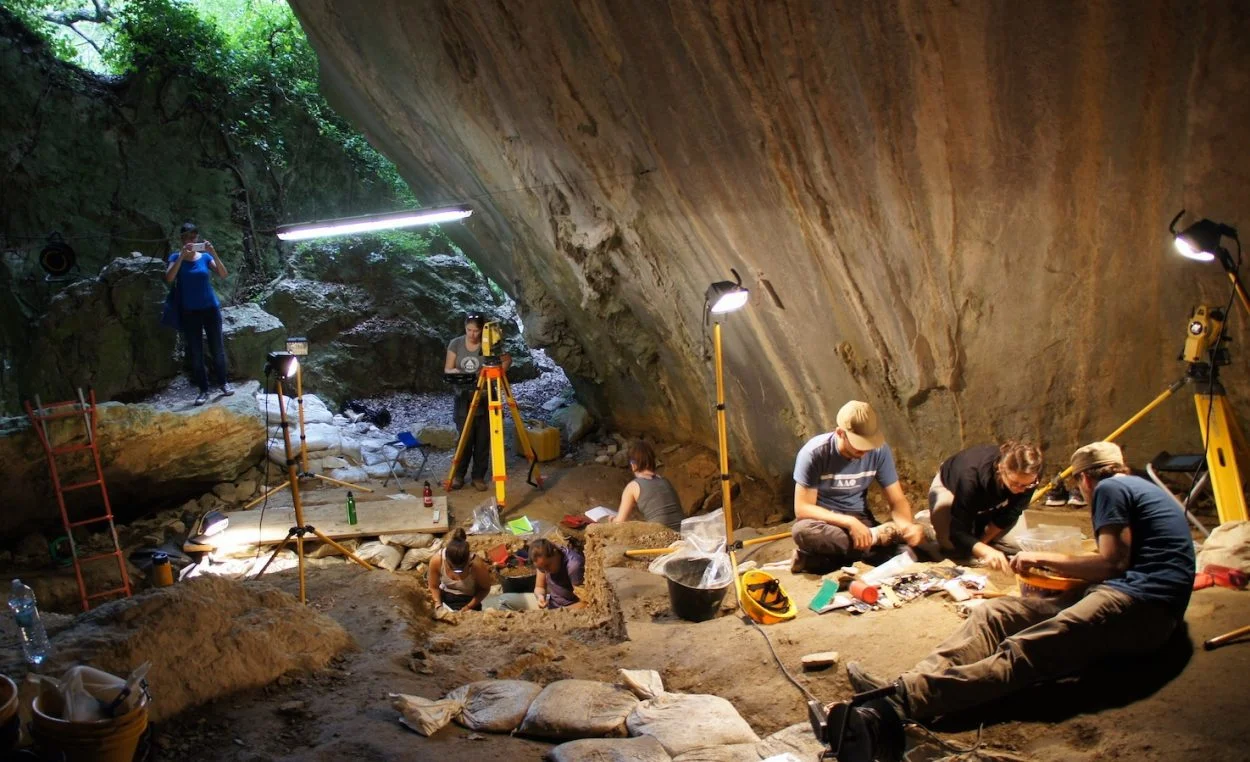THE AUTHORS OF A NEW ARTICLE PUBLISHED IN THE JOURNAL OF ARCHAEOLOGICAL METHOD AND THEORY ARGUE THAT THEY HAVE FOUND EVIDENCE OF THE USE OF BABY CARRIERS 10,000 YEARS AGO AT THE ARMA VEIRANA SITE IN LIGURIA, ITALY.
The research, led by Arizona State University’s Claudine Gravel-Miguel, PhD, also includes the University of Colorado Denver’s Jamie Hodgkins, PhD, an Associate Professor of Anthropology, and a co-principal investigator on the excavation of Arma Veirana.
Because material used to make the first baby carriers does not preserve well in the archaeological record and because prehistoric baby burials are very uncommon, evidence for prehistoric baby carriers is extremely rare. The site—which includes the oldest documented burial of a female infant in Europe, a 40- to 50-days-old baby, nicknamed Neve—has both. Researchers used innovative analytical methods to extract hard-to-obtain information about perforated shell beads found at the site.

The study used a high-definition 3D photogrammetry model of the burial combined with microscopic observations and microCT scan analyses of the beads to document in detail how the burial took place and how the beads were likely used by Neve and her community in life and in death.
The results of this research show that the beads were likely sewn onto a piece of leather or cloth that was used to wrap Neve for her burial. This decoration contained more than 70 small, pierced shell beads and four big, pierced shell pendants, the likes of which have yet to be found elsewhere. Most of the beads bear heavy signs of use that could not have been produced during Neve’s short life, demonstrating they were handed down to her as heirlooms.
“Given the effort that had been put into creating and reusing these ornaments over time, it is interesting that the community decided to part with these beads in the burial of such a young individual, said Gravel-Miguel. “Our research suggests that those beads and pendants likely adorned Neve’s carrier, which was buried with her.”
Relying on ethnographic observations of how baby carriers are adorned and used in some modern hunter-gatherer societies, this research suggests that Neve’s community may have decorated her carrier with beads in order to protect her against evil. However, it is possible that her death signalled that those beads had failed, and it would have been better to bury the carrier rather than reuse it.
“Infant burials are so rare, and this one had so many beads,” said Hodgkins. “Being able to look at the use wear and positioning of the ornaments around the infant to determine that these beads were handed down and the infant was wrapped in a way that matches the form of a baby carrier is truly a unique glimpse into the past, giving us a connection to this tragic event that happened so long ago.”
Src: heritagedaily.com








